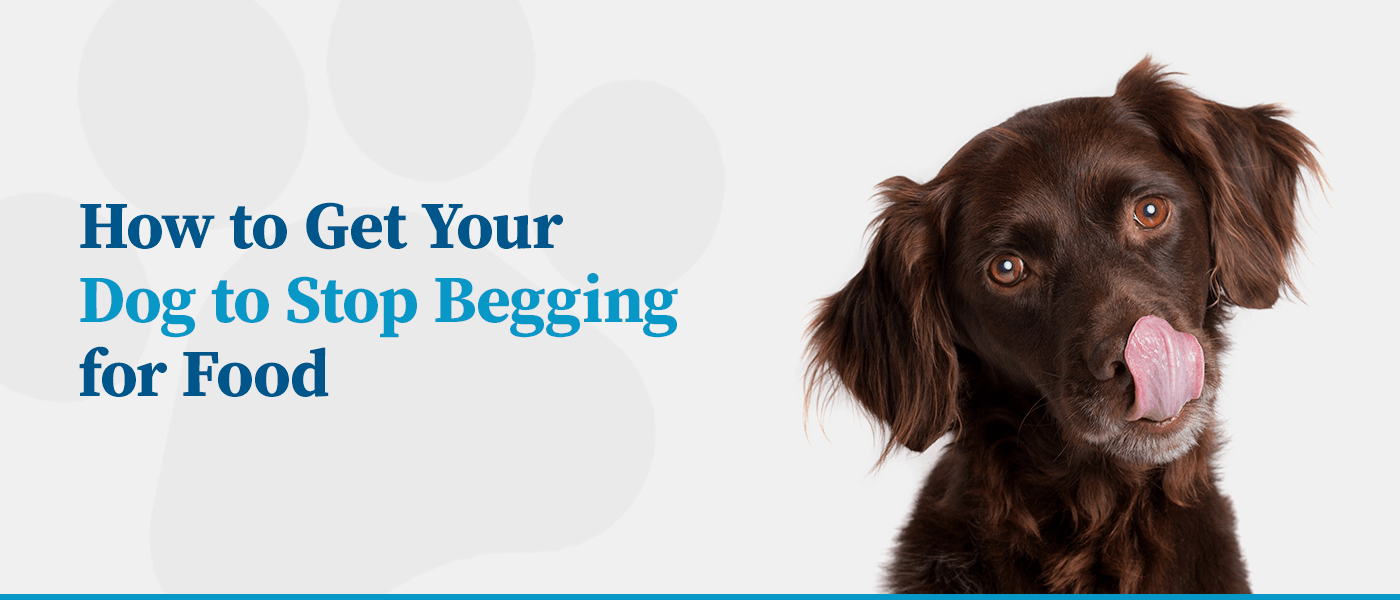Most dog owners know what it’s like to deal with a begging dog. This common behavior can be a nuisance during mealtimes and a health problem for your dog if you give in. Understanding why your dog begs for food and practicing a few simple training techniques can go a long way toward correcting the behavior.
Why Do Dogs Beg for Food?
As humans domesticated dogs, our furry friends learned how to interact with us to get what they want most — food. Dogs are natural scavengers, and we’ve inadvertently encouraged this behavior through domestication.
In many cases, dogs will beg regardless of when they’ve last eaten. You may have just fed your dog dinner, but they’ll ask for more. They usually do this instinctually, not because they’re still hungry.
Before dogs were domesticated, it was feast or famine. When food was available, they would consume it in large amounts to sustain themselves and keep their bodies warm. When food was scarce, they’d become scavengers, living off whatever they could find. Domesticated dogs still have this evolutionary response.
While your dog’s begging may make sense from an evolutionary perspective, giving in to begging can lead to overeating and obesity. When you support this behavior, your dog quickly learns that if they’re persistent enough, begging will get them food.
How to Train Your Dog to Not Beg for Food
If your dog constantly begs for food, there are things you can do to nip the behavior in the bud. It may take time — especially if your dog is used to getting table scraps — but with patience and consistency, you can successfully teach your dog to stop begging.
Here are some top tips for training your dog not to beg.
Feed Them First
Try feeding your dog right before you sit down to have your meal — ideally in a different room than the one you dine in. When you give your dog their food at this time, they’ll be distracted by the meal and less likely to beg while you eat.
Use the “Place” Command
The “place” command teaches your dog to go to their place — such as a dog bed, cushion or spot on the floor. When you’re preparing food or eating, tell your dog to go to their place.
When you first start teaching this command, you may have to bring your dog to their place on the leash. Reward them while they’re in their place with a small dog treat or favorite toy. If they refuse to stay, put your dog out of the room and try again later.
Teach Them Basic Obedience
Besides “place,” teaching your dog commands like “sit,” “stay” and “leave it” can also help discourage begging. For example, you can tell your dog to “stay” once you send them to their place, or you can tell them to “leave it” if someone accidentally drops food on the ground.
To help ensure your dog is calm and well-behaved during training, try exercising them beforehand to release some of their energy.
Ignore and Redirect
Although it can be difficult, it’s crucial not to give in to your dog’s begging. If you give them food or attention, you’re reinforcing the begging behavior.
You should also ensure other things can redirect and occupy your dog’s attention. For example, having a toy or chew available allows your dog to have their own special treat while the family is eating.
Make Sure Everyone Follows the Rule
When you set a no-begging rule, everyone in your household must follow it to change your dog’s behavior. If even one person gives in to the begging, it will send mixed messages to your dog about what you’ll tolerate. When everyone ignores your dog’s begging, your pup will be more likely to get the message that begging won’t be rewarded.
Find a Well-Behaved Dog at Golden Meadows Retrievers
At Golden Meadows Retrievers, we specialize in matching the right Golden Retriever or Vizsla puppy to your family. Each puppy goes through our specially developed training program, allowing you to take home an almost fully trained new companion.
Get in touch with us today to learn more about our pups’ training regimen and how you can take one home.


